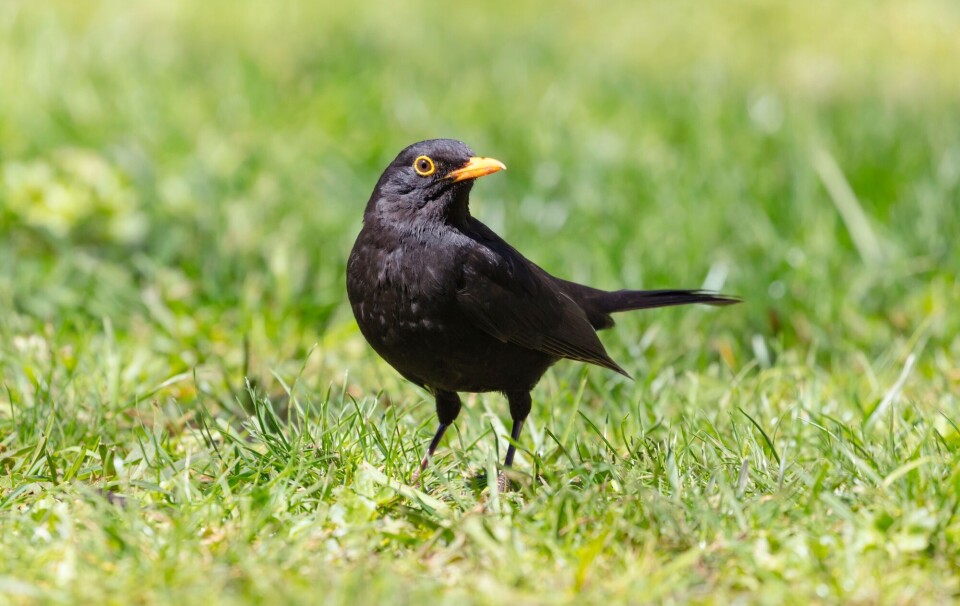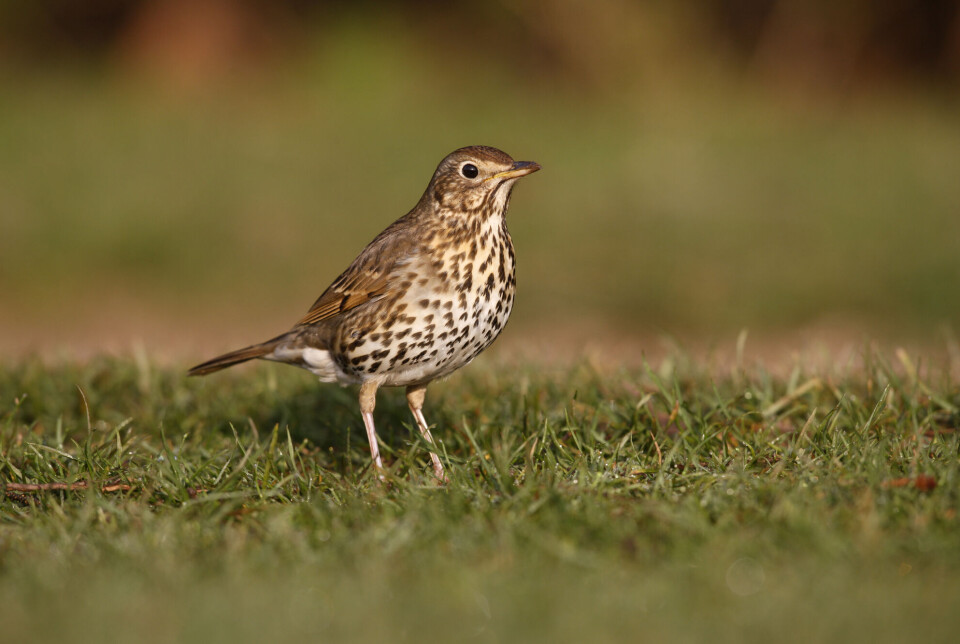
Thrushes spread the most dangerous Lyme bacteria
“Everyone knows that the forest harbours ticks, but perhaps not many people think about the fact that ticks are also on lawns and at rest areas along the road,” says researcher.
The most common Lyme bacterium people get from ticks is transmitted by small rodents such as mice.
This bacterial pathogen is called Borrelia afzelii.
“The most severe cases of the disease, called neuroborreliosis, are caused by the bacterium Borrelia garinii,” says Atle Mysterud.
The professor of life sciences at the University of Oslo has led a research project that investigated how the Borrelia bacterium is transmitted in Norway.
The researchers have now determined that Borrelia garinii is primarily spread through thrushes.
Neuroborreliosis is serious
Neuroborreliosis often causes meningeal and nerve root inflammation.
People who are affected can experience significant neck or back pain. The pain can also radiate into the arms and legs. Some individuals also experience palsy and difficulties with their strength and coordination. The facial nerves are most commonly afflicted. You can read more about neuroborreliosis at the Norwegian Tick Centre.

However, it is important to remember that the risk of falling ill after a tick bite is small, probably as low as two percent.
Of the two percent who do become ill, only one in ten end up with a serious illness.
The risk of serious Lyme disease if you are bitten by a tick is therefore probably as small as 0.2 percent.
Nevertheless, more than 500 people became seriously ill in Norway last year.
Hopping around on the lawn
The thrushes are of course not to blame for being the intermediary host that spreads the most serious Borrelia bacterium.
Researchers can now put their understanding of this connection here in Norway to use.
The song thrush, common (or Eurasian) blackbird and redwing are the main culprits in spreading the type of Lyme disease bacteria that leads to the most severe disease, according to Mysterud.
Many people believe that they are most exposed to tick bites and disease in the forest.
But thrushes are birds that are often in close proximity to where humans live. They can often be seen hopping around outside on your lawn.
Thrushes used for reproduction
“All birds that hop around a lot on the ground, like the thrushes do, are quite exposed to ticks,” says Mysterud.
Ticks can feed on blood from almost any animal, including humans.
Bacteria, on the other hand, are often very specialized. The Borrelia bacteria are good examples. The dangerous Borrelia garinii has adapted particularly well to the thrush's immune system, and that is where it would rather be. For the bacterium, its spread to humans is simply an unfortunate side effect.
“This adaptation enables the bacterium to use primarily the thrush's body to reproduce,” says Mysterud.
The tick has been given the job of spreading this bacterium from bird to bird and is also there involuntarily.
The biologist at the University of Oslo points out that a bird like the robin is also a frequent presence on lawns.
“Robins get a lot of ticks on them too, but they’re not as good a host for Borrelia garinii as the thrushes are.”

Often no red bullseye
A red rash, or ‘bullseye’, around the bite site is an easily recognizable sign that a person has contracted Lyme disease through a tick bite.
Unfortunately, most people who develop the serious disease neuroborreliosis do not get this red rash around the bite site to alert them.
This most severe tick-borne disease is thus more difficult to detect. Often, a person who develops neuroborreliosis does not know that he or she has been bitten by a tick.
Only when the person develops neurological symptoms – pain, palsy, dizziness or severe headache – is the disease discovered.
The symptoms of neuroborreliosis can also be difficult to distinguish from other diseases, thus delaying both diagnosis and treatment with antibiotics.
Remove the tick quickly
You needn’t be excessively afraid of ticks and Lyme disease. Don't let them stop you from walking in the woods, fields – or lawns.
If you do get bitten by a tick, most likely nothing will happen, except that the bite site gets a little itchy.
You should in any case remove a tick that has attached to the skin as quickly as possible. If you remove the tick within 24 hours of it attaching itself, it is unlikely that the Borrelia bacterium have been transmitted.
You can easily remove the tick with your fingers or nails. Tweezers are not recommended.
Deer and moose do not spread disease
Roe deer, elk and red deer often have large quantities of ticks on them. Many people find it disgusting.
But now we know that these animals have developed immunity to the Lyme bacteria. They are able to clear the bacteria out of their bodies.
“Although adult ticks often suck a lot of blood from a deer, research has now documented that this does not contribute to the spread of Lyme bacteria and their diseases,” says Mysterud.
However, the deer are still an important contributor to spreading ticks in the ecosystem when they have so many ticks on them,” he adds.

There are several species of ticks. But in Norway, it is normally only the castor bean tick (Ixodes ricinus) that spreads the two Lyme bacteria dangerous to humans – Borrelia afzelii and Borrelia garinii.
Ticks on lawns and at rest areas
Randi Eikeland is a specialist in neurology and heads the Tick Centre at Sørlandet Hospital.
“Everyone knows that ticks are in the woods,” she says.
“But not that many people think about the fact that ticks are also on lawns and at rest areas where people stop along the road, for example.
“We have a lot of thrushes in Norway, so they’re probably responsible for spreading Borrelia garinii to new places in the country,” says Eikeland.
The head of the Tick Centre points out that people should know that infection from ticks is not just something you should think about if you spend time in the woods or in the countryside. It can also occur on lawns or in grassy rest areas.
More knowledge can lead to less disease
Eikeland mentions a new study carried out by Dutch researchers.
“The researchers found that in places where people often sit and eat outside, ticks contain more infectious agents than in other places,” she says.
“This could be at rest areas, where many people don’t think that there’s a particular risk of infection from ticks.”
“The researchers don’t know the reason. But they speculate that food scraps might be attracting mice and birds.”
Eikeland has just returned from an international conference on ticks. She has helped to publish a scientific article that highlights uplifting research, including from Slovenia.
Researchers are now seeing a decrease in the number of people with severe Lyme disease.
This exciting and positive development could also become the case in Norway with the increased focus on ticks and tick-borne diseases.
Eikeland reports that much of the positive development could be due to people coming in for treatment earlier.
You might also like this sciencenorway.no member article from the University of Agder: It’s tick season. The bloodsucker only feeds three times throughout its life
Reference:
Atle Mysterud et.al.: Lyme neuroborreliosis and bird populations in northern Europe. Proc. R. Soc, 2019.
———
Read the Norwegian version of this article at forskning.no
































